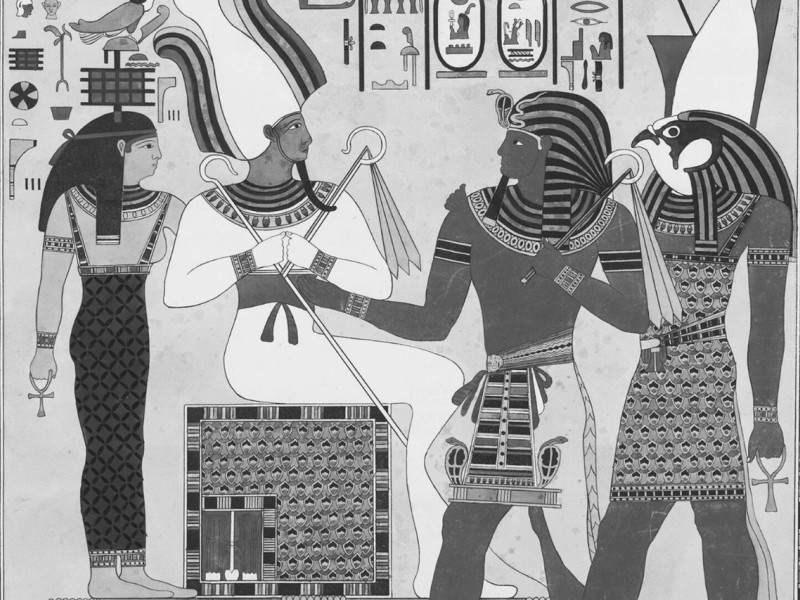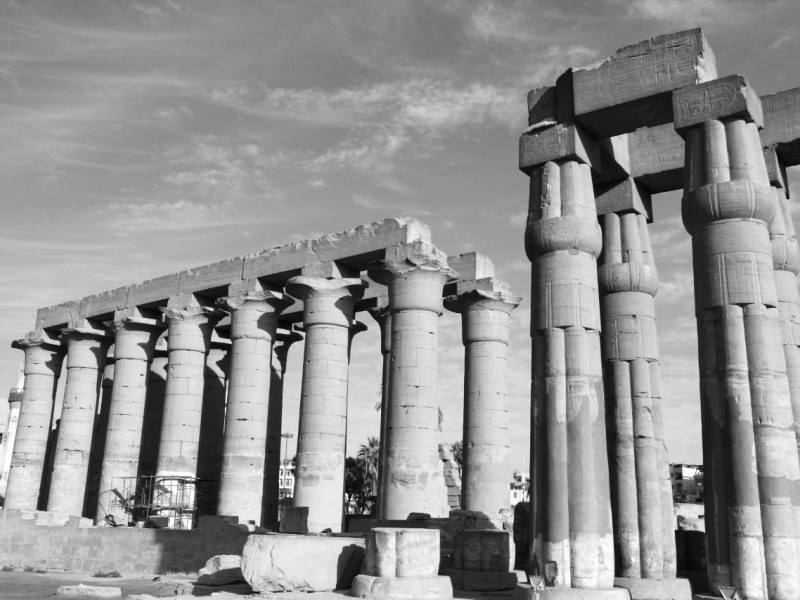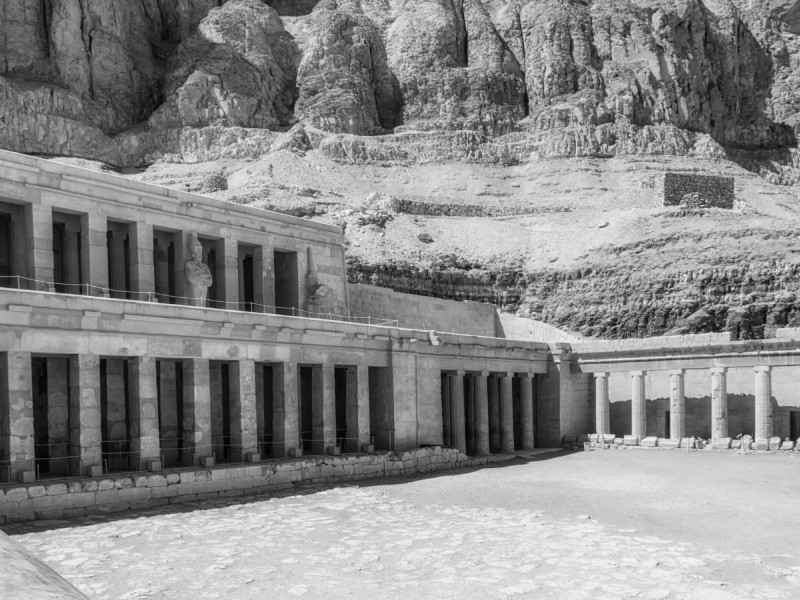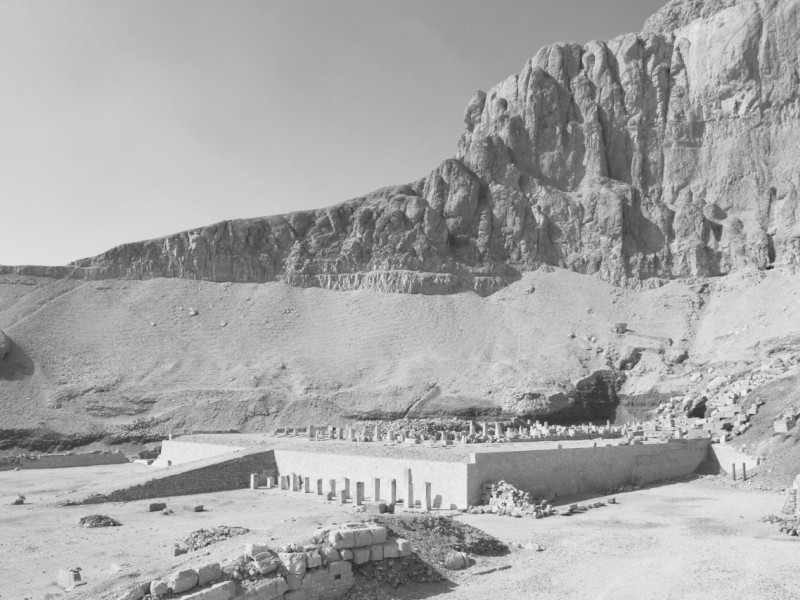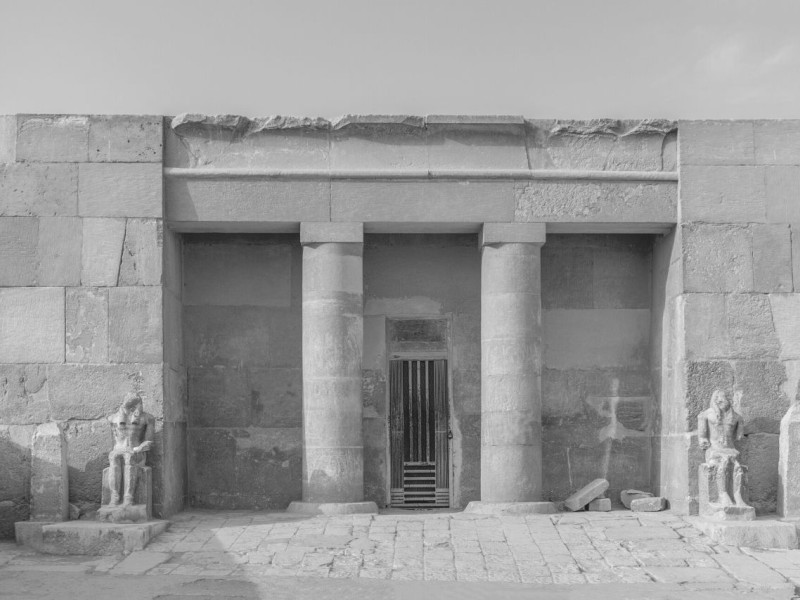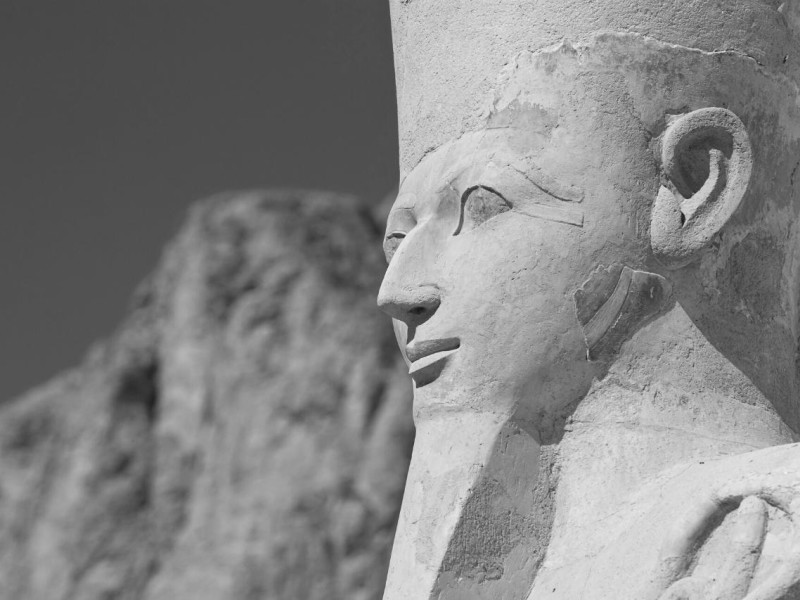Imhotep: Leading Egypt with Immense Wisdom and Prominence
You will be in awe of Imhotep because of his achievements as the second king of the third dynasty of ancient Egypt. He became famous as a vizier, sage, and chief minister to Djoser. He was also a prominent architect and astrologer in ancient times, and he worked as a scribe until he was recognized as a deity.
You can assume that Imhotep was able to build his influence as the genius of his time. To discover his many skills and his extraordinary life, continue reading.
Who Was Imhotep?
Born in the 27th century BC in Memphis, Imhotep (2667 – 2600 BC) ruled as the second king of the third dynasty of the Old Kingdom of Egypt. He emerged as a symbol of good health, as he was eventually adored as Egypt’s god of medicine. In addition to his ability to heal diseases, Imhotep was also regarded as an author of wisdom. His name means “he who comes in peace.”
He succeeded Nefertem in the triad of Memphis, together with Ptah, the creator of the universe, and Sekhmet, the goddess of war. He received much veneration from the Egyptians because they believed in his intelligence and dynamic skills as a physician. He was treated similar to a deity starting from the 30th dynasty, 2,200 years after his death. Later on, he was also associated with Asclepius, the god of medicine in Greece.
In addition to that, Imhotep was a highly respected official of Djoser. Since he was an expert in building step pyramids, he was responsible for the design and construction of the Pyramid Djoser in Saqqara. Pharaoh Imhotep also devised ways to use stone columns in architecture, but other Egyptian builders didn’t acknowledge him for his engineering skills and inventions at the time.
Finally, do you know that he was recognized as the wisest man in ancient times? He was considered a sage, a writer and a patron of scribes. In short, Imhotep was a man of culture, a philanthropist and possibly one of the earlies geniuses of history.
Imhotep as a Deity
Imhotep was regarded as a deity more than 2,200 years after his death. People prayed for healing in his temples as he was worshipped as the god of medicine and healing, particularly at the center of worship in Memphis. Similar to Thoth, the god of architecture, Imhotep created a strong following from various people from all walks of life.
His popularity as a deity even reached the region of Thebes, where he was adored as the brother of Amenhotep. His knowledge in medicine paved the way to his veneration as a god of healing, much like Asklepios, the Greek god of health.
A stele dating back to the Ptolemaic period (305 – 30 BC) has shown how a great famine struck Upper Egypt during Djoser’s reign. The legend revealed that the famine lasted for seven years, but Imhotep came to rescue the people through his impressive ideas for saving food. The stories demonstrated that Imhotep was always present to render service to the people and even provided mystic solutions to the people’s supernatural concerns.
People followed the cult of Prince Imhotep, the son of Kanofer and Kheredu-ankh, as evidenced by the crowds of people who prayed in his temples in Memphis and on the island Philae. They offered sacrifices in his temples with faith that they could find a remedy to their diseases. Imhotep was the only mortal aside from Amenhotep to receive the highest adoration by the people. Physicians too have respected him for his incomparable prowess in healing since antiquity.
Imhotep’s Medical Practice
Imhotep’s medical contributions appeared even before the works of Hippocrates became popular. To be exact, it was believed that Imhotep was already practicing medicine 2,200 years before Hippocrates was born, although the world regards Hippocrates as the Father of Medicine.
Imhotep, on his part, wrote most of his medical practices and healing techniques. Specifically, he wrote procedures, regiments, care, anatomical terms, and treatments for diseases. His texts have been used by the military because of their effectiveness in enhancing their medical knowledge on the battlefield.
His medical writings were comprehensive, containing clear definitions, prognosis, explanations, and treatments for wounds and diseases. Also, his treaties included progressive approaches to medicine that even our modern doctors agreed with because they were scientific and medically proven.
It is so unique that Imhotep took time to record every bit of information about the examination of a disease, observation, possible treatments, the development of the disease, and the patient’s reaction to the regiment applied.
He wrote in detail if the condition was fatal, treatable, healed, and terminal. Needless to say, his medical writing served as records of all of his patients’ conditions. On the other hand, the back of the papyrus where his medical treatments were found also came with surprising magical treatments in the form of magic spells and chants for healing.
Imhotep and His Legacy
To date, we have limited information about Imhotep’s life because pieces of evidence of his achievements have been destroyed by natural phenomena, wars, and negligence. However, his legacy as an extraordinary king, deity, priest, physician, engineer and scribe prevails. Egyptians revered him for his wisdom and outstanding contributions to civilization.
Historians have depicted Imhotep in the literature. Egyptians loved literature more than any other civilization of the time and liked to read about the undertakings of Imhotep, as well as his relations with Djoser, “the holy one.”
You should know that Imhotep was a royal seal bearer and an overseer of the priests of Heliopolis and sculptors. He was given a high position in the temple and the royal court. High priest Imhotep was also respected as an authority in the Egyptian ancient religion.
His prestige was even more emphasized when his image of a sitting god, wearing a cap with an open papyrus on his lap, came out in the Memphis region. His name was always associated with Djoser, considered his divine father. As an apostle of Djoser, he gained magical powers to fight against an Assyrian sorceress.
Imhotep’s Achievements
Imhotep’s legacy is extraordinary. Many people revered him for his attainments in science, math, engineering, medicine, and astronomy. He is known as the first physician in the world.
Aside from his medical writings, he also wrote on religion, probably because he’s a priest. He dealt with man’s morality, poetry, architectural designs, and scientific observations. You cannot avoid taking into consideration Imhotep’s involvement in the astrological field because, in sources that resurfaced recently, there are claims of Imhotep’s expertise in this matter.
Imhotep emulated his predecessor, and he also tried to outsmart his king by building colossal pyramids that could serve as his monument. It was also evident that he wanted to build an extraordinary tomb that others have never done before. It was an architectural challenge for the world to see.
He tried to build statuary, monuments, and pyramids that were patterned from the step pyramid in Saqqara. Since they were discovering the use of stone in building, they found it useful to build one, then attempt another, until they perfected the use of stone, clay, and rocks in their pyramids.
Imhotep and Architecture: The Pyramid of Saqqara
In terms of architecture, Imhotep pioneered the design of a step pyramid and was regarded as the brain behind the step pyramid in Saqqara. Experts in architectural designs agree that this particular style is significant in history because it embodies the evolution of man’s architectural wisdom. Imhotep pyramid complex is by far an outstanding edifice that modern engineers still talk about.
This pyramid is composed of six steps at the height of 200 feet. You can see that his pyramid has passed the test of time. It still stands with pride up to now, which symbolizes its strength and durability. Hence, Imhotep is revered because engineers know that the intricacy of his designs depends on the strong foundation of the structure. Engineers are impressed not just on the magnitude of the pyramid but also on its strength and ability to withstand natural elements.
Due to its image, the step pyramid has been monumental in ancient times. Historians have described Djoser as the opener of stone or the inventor of stone architecture. His vizier, Imhotep, proved his innovations as he embraced the works of Djoser.
More Details on the Pyramid of Saqqara
The people embraced the might of Djoser and Imhotep, such that they were both immortalized in their achievements. They were regarded as deities later on. Imhotep, in particular, made sure that what he made was a true example of excellence, so he designed the pyramid to mirror his extraordinary persona.
Of all the pyramids built, Imhotep took pride in his step pyramid designed to withstand wind, rain, sand, and the sun. As an outstanding builder, Imhotep thought of a pyramid that could surpass all other works of the previous regimes.
His pyramid complex was established as one of the best in the world. It was surrounded by a trench 40 yards wide. You should see that it has a 750 × 600 yards perimeter enclosed by a wall of 10 yards.
You remember that Egyptians primarily used mudbrick in their early buildings, but Imhotep replaced them with tiny blocks of limestone. He made several attempts to make a perfect design aligned with human’s eternal residence in stone.
Summing Up Imhotep’s Life and Deeds
Much can be talked about Imhotep because of his outstanding accomplishments in medicine, science, architecture, math, astronomy and even sorcery. You have to acknowledge his contributions in medicine and healing. He was regarded as a deity by the Egyptians, as they believed in his works and power.
You should know that his popularity even reached the Greeks and the Roman Empires. Records have shown that Emperors Tiberius and Claudius were influenced by the immense wisdom and ability of Imhotep, such that they inscribed their praises of the god Imhotep in their temples.
He was born a commoner. Nonetheless, with his brilliance and innate skills, he advanced to the highest position a man could have in ancient Egypt. He was associated with King Djoser as his trusted vizier and the main architect who was responsible for the strategic planning and progress of Egypt.
As a high priest, he was very faithful to gods. Many were in awe of his piety, which was probably the reason why he was later on worshipped as a deity. When this happened, people from all walks of life had to come to his temple to offer their prayers and sacrifices.
The Death of Imhotep
It was believed that he died in 2600 BC. Egypt is known as the land of mystery and sorcery. Among the many secrets of pyramids, his resting place is one still undiscovered yet. Archeologists have tried hard to locate the Imhotep tomb, but they all failed.
Who would not invest time in his tomb considering his prestigious life as a physician, engineer, writer, sage, vizier, and, later, king? In fact, several expeditions have been launched to locate one of the most controversial tombs in the world, but they all failed to discover the tomb of Imhotep.
You must know that the Imhotep mummy is essential because it could serve as a link between the past and modern history. It is believed that it could reveal more about the mystery behind the wisdom and greatness of Imhotep.
His deity is something to be discovered, while his identity should be unveiled for generations to come. Imhotep was revered with extraordinary wisdom. Suffice to say, he worked with marvelous effects. He may have died, but his legacy is still alive today.
Conclusion
King Djoser was impressed with the works of Imhotep, which led the king to inscribe his name in the temple. He was also given a special burial chamber in Djoser’s temple in the step pyramid when he died. Egyptian literature will not be completed without manuscripts written about the greatness of Imhotep. He led Egypt with his wisdom and glorious power.
Despite all this, we still don’t have much information on his life and death, and researchers all over the world are on a quest to find his burial site. What do you think, will they be able to unveil the mystery?




